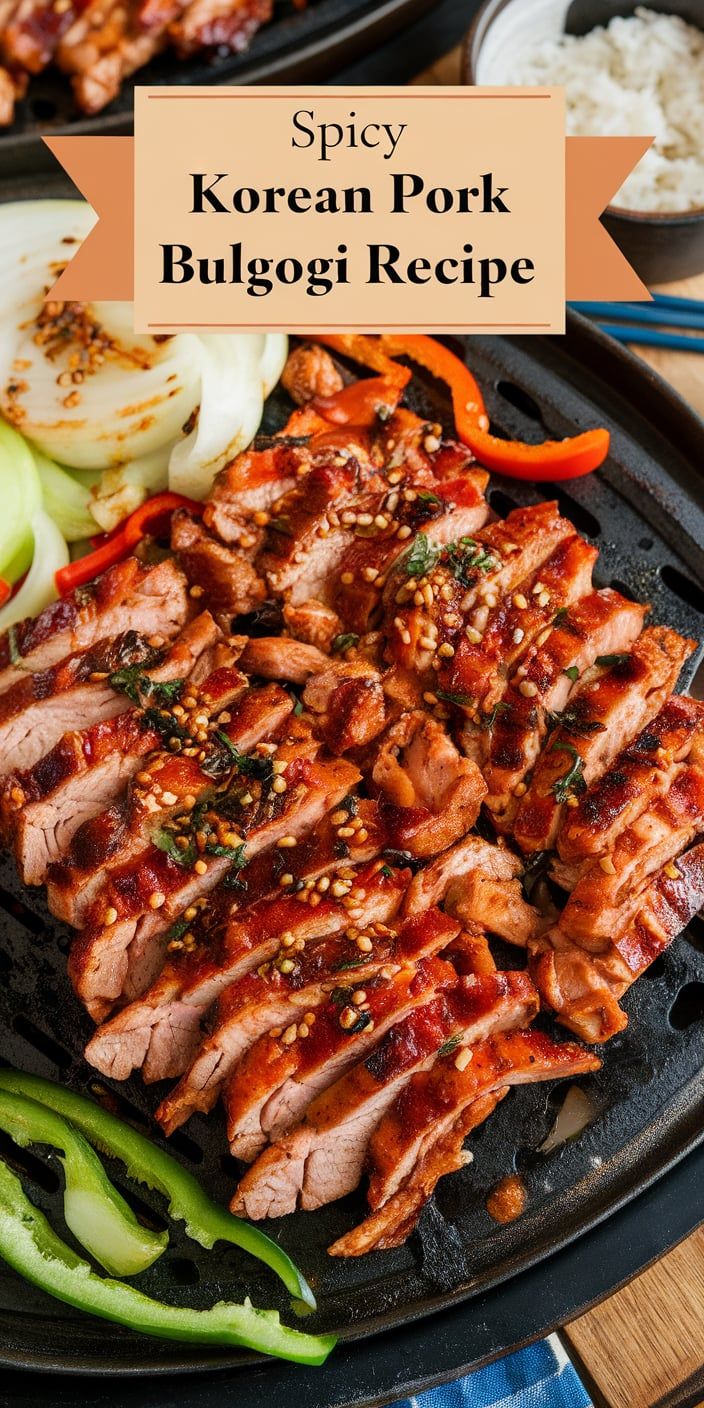Discover the incredible world of spicy Korean pork bulgogi, a tantalizing Korean BBQ recipe that transforms ordinary meals into extraordinary culinary experiences. This homemade bulgogi brings the vibrant flavors of Korean cuisine directly to your kitchen, offering a perfect blend of tender meat and bold spices that will excite your taste buds.
Korean BBQ has long captured the hearts of food enthusiasts worldwide, and this spicy Korean pork bulgogi recipe is no exception. With its rich marinade and complex flavor profile, this dish promises to transport you to the bustling street markets of Seoul with every single bite.
Key Takeaways
- Quick and delicious authentic Korean BBQ recipe
- Perfectly balanced spicy and savory flavors
- Easy to prepare at home with simple ingredients
- Versatile dish suitable for various dining occasions
- Provides a genuine taste of Korean culinary tradition

What Makes Korean Pork Bulgogi Special
Korean cuisine boasts a rich culinary heritage that has captivated food lovers worldwide. Pork bulgogi stands out as a quintessential dish that embodies the depth and complexity of Korean BBQ flavors. This beloved recipe represents more than just a meal – it’s a cultural experience that connects generations through shared culinary traditions.
Origins and Cultural Significance
The roots of bulgogi trace back to the Goguryeo era, where meat preparation techniques were refined in royal courts. Neobiani, the predecessor of modern bulgogi, was a luxurious dish reserved for nobility. As Korean cuisine history evolved, this grilled meat technique became accessible to all social classes, transforming from an elite delicacy to a beloved national dish.
Different Types of Bulgogi Varieties
Bulgogi showcases incredible versatility across Korean cuisine. The primary bulgogi varieties include:
- Beef Bulgogi (most traditional)
- Pork Bulgogi (our focus)
- Chicken Bulgogi
- Seafood Bulgogi variations
Key Flavor Components
The magic of Korean BBQ flavors lies in its sophisticated marinade. Pork bulgogi typically combines:
- Soy sauce for umami depth
- Sesame oil for nutty undertones
- Grated garlic for pungency
- Grated pear for natural sweetness
- Gochugaru (Korean red pepper flakes) for subtle heat
“Bulgogi is not just food, it’s a celebration of Korean culinary artistry” – Korean Food Historian
Essential Ingredients and Kitchen Tools
Crafting an authentic spicy Korean pork bulgogi requires specific Korean cooking ingredients and specialized kitchen tools. The right combination of ingredients transforms an ordinary meal into a spectacular culinary experience.
Key Ingredients for Bulgogi Marinade
Selecting premium ingredients is crucial for creating a memorable bulgogi marinade. The core components include:
- Pork cuts: Opt for tender cuts like pork shoulder or Boston butt
- Gochugaru (Korean red pepper flakes) for authentic spiciness
- Soy sauce as a foundational flavor element
- Fresh garlic for depth and aroma
- Asian pear for natural meat tenderization
Essential Korean BBQ Tools
Preparing bulgogi requires specific Korean BBQ tools that enhance the cooking process:
| Tool | Purpose |
|---|---|
| Portable Korean Grill | Authentic grilling experience |
| Sharp Meat Slicer | Precise thin meat cuts |
| Ceramic Mixing Bowls | Preparing marinade |
| Long Cooking Tongs | Safe meat handling |
Understanding these ingredients and tools will elevate your Korean pork bulgogi from simple home cooking to a restaurant-quality dish.
Spicy Korean Pork Bulgogi Recipe
Creating an authentic bulgogi marinade recipe requires precision and passion. Korean BBQ cooking methods transform simple pork into a mouthwatering dish that captures the essence of traditional Korean cuisine.
Marinade Preparation
The heart of any great Korean pork preparation lies in its marinade. Gather these key ingredients:
- 1/2 cup soy sauce
- 1/4 cup brown sugar
- 3 tablespoons gochujang (Korean red pepper paste)
- 3 minced garlic cloves
- 2 tablespoons sesame oil
- 1 tablespoon grated ginger
Whisk all ingredients together until the sugar dissolves completely. The blend of sweet, spicy, and savory creates the signature flavor profile of bulgogi.
Meat Selection and Preparation
Select thinly sliced pork shoulder or pork belly for the most tender results. Slice the meat against the grain into thin, uniform pieces approximately 1/8 inch thick. This ensures maximum marinade absorption and quick cooking.
Cooking Techniques and Tips
Korean BBQ cooking methods suggest several approaches:
- Grill pan: High heat, 2-3 minutes per side
- Outdoor grill: Medium-high heat, quick searing
- Stovetop skillet: Cast iron recommended for best caramelization
Pro tip: Marinate the pork for at least 30 minutes, but no longer than 2 hours to prevent the meat from becoming too salty.
Conclusion
Crafting spicy Korean pork bulgogi at home opens a delightful gateway into authentic Korean cuisine. This recipe transforms your kitchen into a vibrant culinary adventure, inviting you to explore the rich flavors of traditional Korean BBQ with confidence and creativity.
When serving bulgogi, consider classic accompaniments like steamed rice, crisp kimchi, and fresh lettuce wraps. These side dishes elevate the dining experience and create a more immersive Korean cuisine at home experience. Experimenting with spice levels and ingredient combinations allows you to personalize the dish to your taste preferences.
The beauty of homemade Korean BBQ lies in its versatility and ability to bring people together. Whether you’re cooking for family or hosting a dinner party, spicy pork bulgogi promises to impress and delight. Each bite represents a culinary journey that connects you with Korean food traditions, encouraging ongoing exploration and enjoyment.
Remember that cooking is an art of passion and practice. Your bulgogi skills will improve with each preparation, so embrace the process and share your delicious creations with loved ones. Your homemade Korean BBQ adventure has only just begun!
